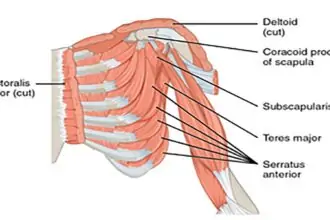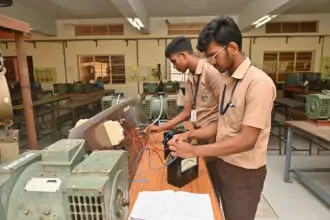Inverted Dog Nipple
Inverted nipples are common issue in dogs, but many pet owners often don’t know what they are and how to care for them. Inverted nipples occur when the nipples turn inward instead of extending outward. In this guide, we’ll discuss the causes of inverted nipples in dogs, how to care for them, and when to seek veterinary care.

What Is Inverted Dog Nipple?
An inverted dog nipple is a condition in which the nipple is bent inward instead of extending outward as normal. The severity of inverted nipples in dogs can vary, from where the nipple is partially inverted, to mild inversion where the nipple completely inverts the surrounding tissue.
Inverted nipples can occur in male and female dogs alike and can affect one or more nipples. The condition can be congenital (present at birth) or acquired later in life due to various factors such as hormonal changes, trauma or medical conditions.
Inverted nipples in dogs don’t always cause discomfort or health problems, but they can cause potential complications such as inflammation, infection or difficulty breastfeeding for nursing mothers. It is imperative that pet owners monitor their dog’s nipples for any changes in appearance or behavior and consult a veterinarian if they are concerned about an inverted nipple or any other health issue affecting their pet.
Causes of Inverted Dog Nipple!
Certainly! Here are some potential causes of inverted dog nipples:
- Genetic predisposition: Some dog breeds are more prone to having inverted nipples due to their genetic makeup.
- Hormonal imbalances: Fluctuations in hormone levels, particularly during puberty, pregnancy, or lactation, can affect nipple development and cause inversion.
- Trauma or injury: Physical trauma to the mammary glands or surrounding tissues can result in nipple inversion.
- Mastitis: Inflammation of the mammary glands, commonly associated with bacterial infection or milk accumulation, may lead to changes in nipple structure.
- Tumors or growths: Benign or malignant growths within the mammary tissue can alter the shape and position of the nipples, causing inversion.
- Aging: As dogs age, the elasticity of their skin and tissues decreases, which can contribute to nipple inversion.
- Congenital anomalies: Some dogs may be born with congenital abnormalities affecting the development of their mammary glands, leading to inverted nipples.
- Excessive grooming or licking: Persistent licking or grooming of the mammary area by the dog or other pets can cause irritation or damage to the nipples, resulting in inversion.
- Surgical procedures: Previous surgeries involving the mammary glands, such as spaying or mastectomy, may occasionally lead to nipple inversion as a complication.
- Unknown factors: In some cases, the exact cause of inverted dog nipples may remain unidentified despite thorough evaluation and testing by veterinarians.
How to clean inverted dog nipple?
Cleaning inverted dog nipples requires gentle care to avoid causing discomfort or injury to your pet. Here’s a step-by-step guide on how to clean inverted dog nipples:
- Prepare the cleaning area: Choose a quiet and comfortable space where your dog feels relaxed. Lay down a clean towel or blanket to provide a soft surface for your pet to lie on.
- Wash your hands: Before handling your dog, make sure to wash your hands thoroughly with soap and warm water to prevent the transfer of bacteria.
- Gently expose the inverted nipples: If your dog’s nipples are inverted, you may need to gently massage the surrounding area to encourage them to protrude. Be extremely gentle to avoid causing any discomfort to your pet.
- Clean with warm water: Dampen a clean cloth or cotton ball with warm water. Use gentle strokes to clean around the inverted nipples, being careful not to apply too much pressure. Avoid using harsh soaps or chemicals, as these can irritate your dog’s skin.
- Pat dry: After cleaning, use a separate dry cloth or towel to gently pat the area dry. Make sure to remove any excess moisture to prevent bacterial growth.
- Observe for signs of irritation or infection: While cleaning, keep an eye out for any signs of redness, swelling, discharge, or unusual odor around the nipples. These could indicate an underlying issue such as inflammation or infection, and you should contact your veterinarian for further guidance.
- Repeat as needed: Depending on your dog’s individual needs and any underlying conditions, you may need to clean their inverted nipples regularly or as recommended by your veterinarian. Follow their advice for the frequency of cleaning and any additional care instructions.
Always approach cleaning your dog’s inverted nipples with patience and gentleness. If you’re unsure about how to proceed or if you notice any concerning symptoms, don’t hesitate to seek advice from your veterinarian. They can provide personalized guidance based on your dog’s specific needs and health status.
Dog inverted nipple infection
Infections in inverted dog nipples can occur due to various factors, including bacteria or fungi entering the nipple’s ducts or surrounding tissue. Inverted nipples, especially if they are not cleaned regularly or if there’s an underlying condition predisposing the dog to infections, may be more prone to developing infections.

Here’s how you can recognize and address a potential infection in inverted dog nipples:
Redness and Swelling: The area around the inverted nipple may appear red, swollen, or inflamed.
Discharge: You might notice pus-like or foul-smelling discharge coming from the nipple.
Pain or Discomfort: Your dog may exhibit signs of discomfort when the affected area is touched or manipulated.
Lethargy: In severe cases, infections can lead to systemic symptoms such as lethargy, loss of appetite, or fever.
Care and Management of Inverted Nipples in Dogs!
Managing and caring for inverted nipples in dogs involves a combination of preventive measures, regular monitoring, and appropriate veterinary intervention when necessary. Here’s a comprehensive guide to help you care for and manage your dog’s inverted nipples:
1. Regular Monitoring:
- Keep an eye on your dog’s nipples during routine grooming sessions or when petting them.
- Check for any changes in nipple appearance, such as redness, swelling, discharge, or signs of irritation.
2. Gentle Cleaning:
- Clean the area around the inverted nipples regularly with a damp cloth or cotton ball and warm water.
- Avoid using harsh soaps or chemicals that could irritate the skin.
- Pat the area dry gently after cleaning to prevent moisture buildup.
3. Preventing Irritation:
- Prevent excessive licking or grooming of the nipple area by using an Elizabethan collar (cone) if necessary.
- Trim hair around the nipples to reduce the risk of irritation and infection.
4. Providing Comfort:
- Ensure that your dog has a comfortable and clean resting area to prevent rubbing or irritation of the nipples.
- Provide soft bedding to cushion your dog’s body and reduce pressure on the nipple area.
5. Veterinary Consultation:
- If you notice any signs of infection, inflammation, or discomfort around the inverted nipples, consult your veterinarian promptly.
- Your vet can perform a thorough examination to determine the cause of the inversion and recommend appropriate treatment.
6. Treatment Options:
- Treatment for inverted nipples may vary depending on the underlying cause and severity of the condition.
- In some cases, surgical correction may be recommended, especially if the inversion is causing discomfort or recurrent infections.
- Your veterinarian may also prescribe medications such as antibiotics or anti-inflammatory drugs to manage any associated infections or inflammation.
7. Monitoring for Complications:
- Keep an eye out for any complications such as mastitis (inflammation of the mammary glands) or abscess formation.
- Watch for signs of systemic illness such as lethargy, loss of appetite, or fever, which may indicate a more serious infection.
8. Regular Veterinary Check-ups:
- Schedule regular veterinary check-ups to monitor your dog’s overall health and address any concerns related to the inverted nipples.
- Your vet can provide guidance on long-term management and preventive measures to keep your dog comfortable and healthy.
By following these care and management practices, you can help ensure the well-being of your dog with inverted nipples and minimize the risk of complications associated with this condition. Always prioritize your dog’s comfort and seek veterinary assistance if you have any concerns or questions about their nipple health.
Read Also:






